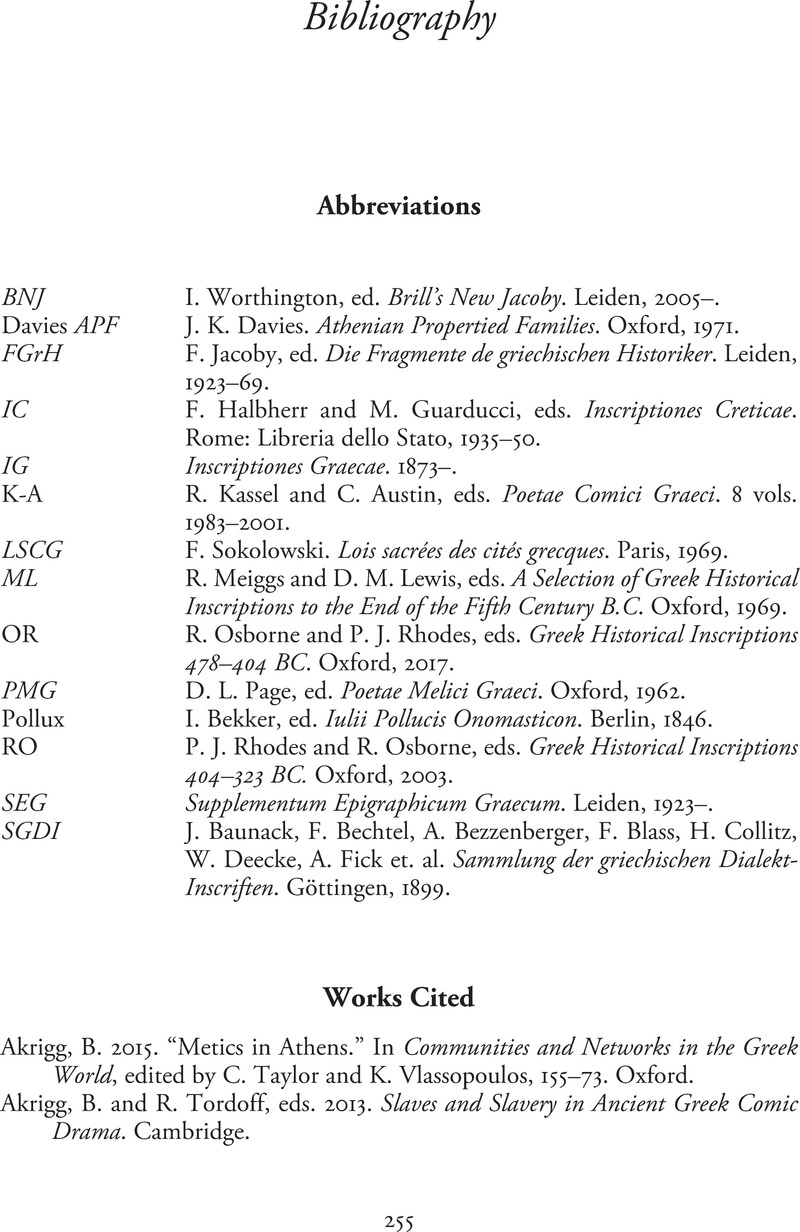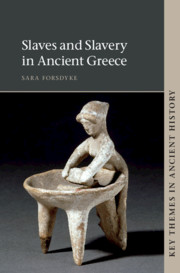Book contents
- Slaves and Slavery in Ancient Greece
- Key Themes in Ancient History
- Slaves and Slavery in Ancient Greece
- Copyright page
- Dedication
- Contents
- Figures
- Tables
- Acknowledgments
- Note on Translations, Dates and Abbreviations
- Map of ancient Greece and the Mediterranean region
- Chapter 1 Approaching Slavery in Ancient Greece
- Chapter 2 Becoming a Slave
- Chapter 3 Being a Slave
- Chapter 4 Slaves and Status
- Chapter 5 Resourceful Slaves and Controlling Masters
- Chapter 6 Why Should We Care?
- Bibliographical Essay
- Bibliography
- Index
- References
Bibliography
Published online by Cambridge University Press: 08 June 2021
- Slaves and Slavery in Ancient Greece
- Key Themes in Ancient History
- Slaves and Slavery in Ancient Greece
- Copyright page
- Dedication
- Contents
- Figures
- Tables
- Acknowledgments
- Note on Translations, Dates and Abbreviations
- Map of ancient Greece and the Mediterranean region
- Chapter 1 Approaching Slavery in Ancient Greece
- Chapter 2 Becoming a Slave
- Chapter 3 Being a Slave
- Chapter 4 Slaves and Status
- Chapter 5 Resourceful Slaves and Controlling Masters
- Chapter 6 Why Should We Care?
- Bibliographical Essay
- Bibliography
- Index
- References
Summary

- Type
- Chapter
- Information
- Slaves and Slavery in Ancient Greece , pp. 255 - 270Publisher: Cambridge University PressPrint publication year: 2021



